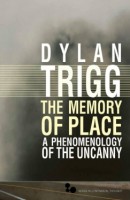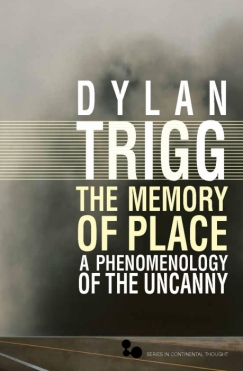 Author: Dylan Trigg
Author: Dylan Trigg
Publisher: Ohio University Press – 347 pages
Book Review by: Deekay Daulat
You may or may not have been to a place where you say to yourself: I have seen this place before. I have lived here as a child. You recall your childhood experiences in that house. You tour the house, which now belongs to someone else, and you can recall what your room looked like, what the kitchen, hallway, your brother’s room, your sister’s room and the rest of the interior and exterior of the house looked like. You see the front yard; go to back yard and other surroundings of the house. You are positive you have lived in that house but you just cannot remember when in your past did you live there.
You are positive that in your current life, you have not lived in that house. Perhaps you were too young to retain memory of that house. You ask your parents if the family every lived there. They say no, positively the family has not lived there at all.
You are simply baffled. You ask yourself how is it that I recall every little detail of that house? But you have no recollection when you lived there, at what age in your childhood. Nor have your parents lived in that house. It is an eerie, uncanny feeling to not be able to establish a connection, some connection, any connection, but you just cannot.
Now if you were in the East, such as in India for example, there would be a simple explanation: reincarnation. The child or the adult remembers intricate details of his/her prior life because he or she lived there in a previous life. Those memories of places with minute details have been ascertained through the scientific method in hundreds of cases of reincarnation in India.
The memory of place, the subject of this book, is taken for granted and immediately attributed to reincarnation in India and other countries. Parapsychologists, both from the East and West, have studied and verified the details of memory or recollection in numerous documented cases and have found no other explanation for such memory than reincarnation, which has often been described as a “phenomenon.”
In the West, the study of phenomenology has been growing rapidly in the last few decades, but I am not sure if any practitioner has found any explanation for the fact that a person has a memory of a place with no empirical evidence that it is based on that person having physically been in that place ever before.
There are two passages from this book on the “memory of place” and “a phenomenology of the uncanny” that I want to share with the reader. The first is from the Preface”
“I have seen this place before. It is three o’clock on a Thursday afternoon, and I am standing outside my childhood home. On the upper right, through the tree, is the room I slept in. From within that room, I would be able to hear a train in the distance. Through an adjoining hallway on the left of the house is the place where some children once set fire to some disused tires, causing thick clouds of black smoke to disturb the bees in the garden. If I get close enough, perhaps near enough to touch the door, I would be able to see the kitchen where once I burned myself.
“Dare I trespass beyond this door? In doing so, more than a spatial border would be transgressed (italics mine). Crossing that borderline, I would risk conflating the traces of familiarity with the presence of unfamiliarity, entering in to scene of a different timescale, and so producing a place divested of its intimacy with my memory but now accommodating of other people’s lives. So I maintain a distance, allowing my imagination to repair the wounds of time.”
The italicized words are mine, and they point out to a different time period in that person’s consciousness. But what time period is that? And in what part of that person’s consciousness does this memory of place reside? Is it in this current life or in a previous one? These are unanswered questions. One of the subjects of this book explores is phenomenology, which deals with phenomena – things have not been understood or explained, at least not thoroughly.
The second passage that I would like to share with you is this one from the Conclusion of this unusual book:
“Why do the dead return? Why in the darkness of the night, when all activity has been reduced to a trembling in the distance, do the dead disavow their rest and return to the living? What strange beacon is emitted in the world of the living that draws these phantoms to the things of everyday life?”
So phenomena such as the return of the dead have not been understood nor explained by anyone on an empirical basis. I believe it is always beneficial to explore phenomena and issues to which we have no answers. Understanding leads us to better, happier lives. This book by Dylan Trigg is valuable in that respect and I urge readers to get this book to start thinking deeper about phenomena and gain at least some understanding of them.
Dylan Trigg is a CNRS/Volkswagen Stiftung postdoctoral researcher at the Centre de Recherche en Epistemologie Appliquee, Paris. He is the author of The esthetics of Decay and has published widely on phenomenology, Continental philosophy, and aesthetics.







